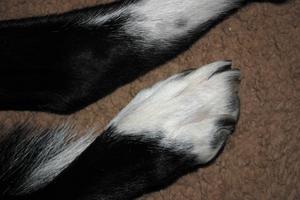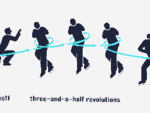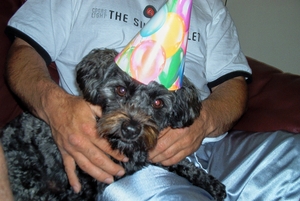Leg and foot injuries are among the most common traumatic injuries in dogs and administering proper first aid will help prevent further damage until the dog can be examined, diagnosed and treated by a qualified veterinarian.
In many cases involving a dog with an injured paw, foot or leg, additional damage occurs after the initial trauma, making for more pain, and a longer, often more complex recovery.
According to Dr. Michael Levine, DVM, it doesn’t take much to injure a dog’s foot. Normal activities like running and playing can result in cuts, sprains, torn ligaments and even broken bones.
Pet owners should always seek veterinary attention for a leg or foot injury, but administering proper first aid at home will help to avoid further damage to the limb in the meantime.
Dr. Levine recommends beginning by visually examining the foot, looking for any wounds, nail breakage, swelling or other abnormalities. If nail damage is present, trim the excess portion of nail, wash the area, disinfect before proceeding.
If the dog’s nails appear to be in good condition, or once you’ve stopped the bleeding in the case of a dog with a damaged nail, the next step is to examine the rest of the toes and paw. Check between toes for debris and slowly manipulate each toe and the foot joints, checking for evidence of pain, swelling and discomfort.
In the even that a joint is misaligned, this can indicate fracture or dislocation. Pet owners should not try to re-align the joint; instead, splint the foot and seek immediate veterinary attention, as severed arteries, muscular damage and compound fractures can occur if left unsplinted and untreated.
If there is a wound (or in the case of a broken nail involving bleeding) the foot must be washed with an anti-bacterial soap like Dial. Then, any embedded debris must be carefully removed with tweezers. Once the paw, leg or foot wound is free of debris, disinfect the wound site using Betadine and once the liquid has air-dried, apply antibiotic ointment to any open wounds to help prevent infection.
The dog’s injured foot or leg should then be wrapped with rolled gauze if a wound or broken nail is present. This cleaning, disinfecting and dressing process must be repeated twice daily until the dog is brought to the vet or until the injury heals.
If broken bones are suspect, splint the foot and ankle with coat hanger wire and gauze or an Ace bandage. Mold the coat hanger to the natural shape of the leg/foot and wrap around the leg and foot. Once complete, the foot should be immobilized, which will prevent further injury.
To help limit swelling and pain, apply ice compresses for 20 minute increments, several times a day.




